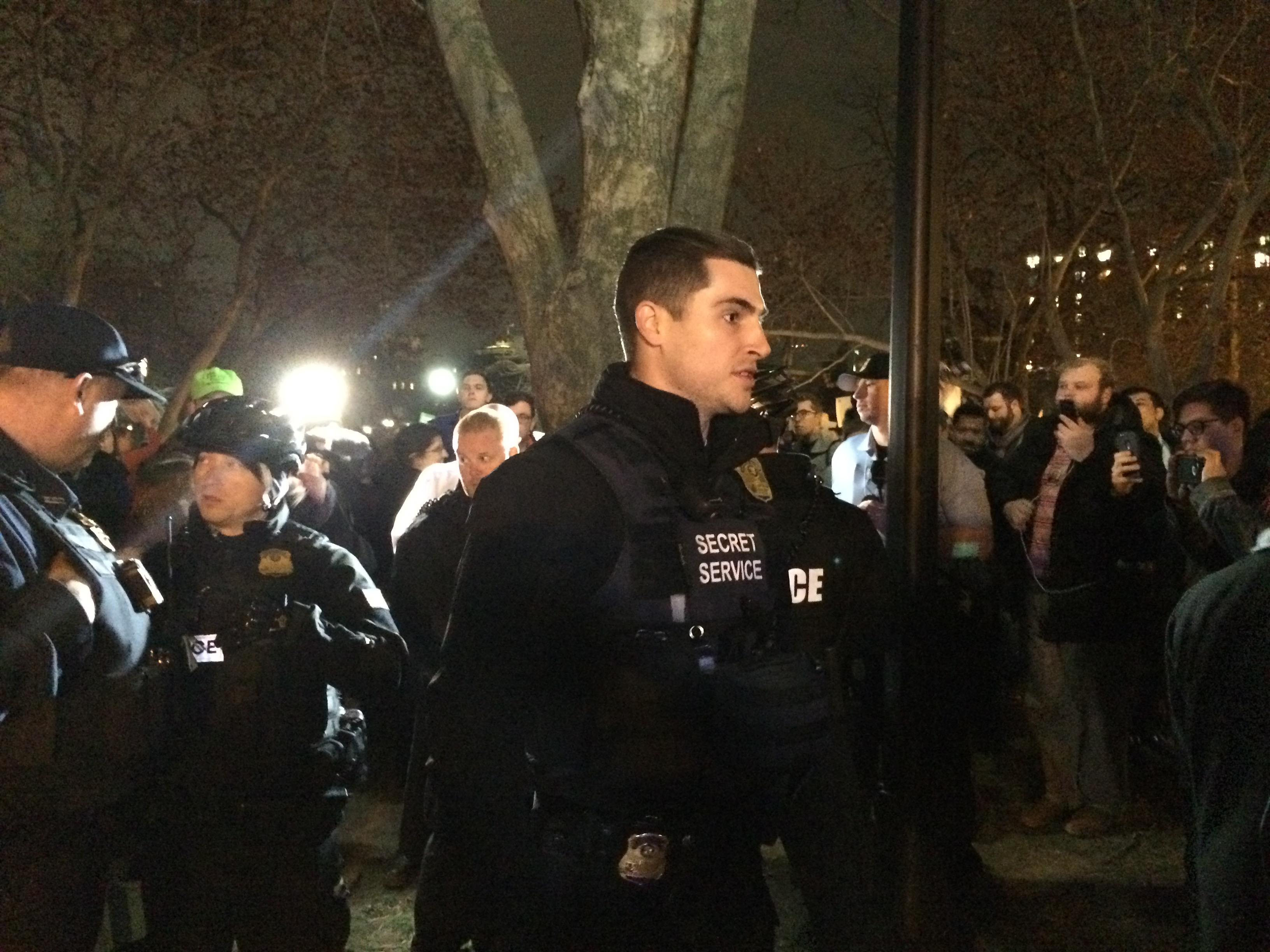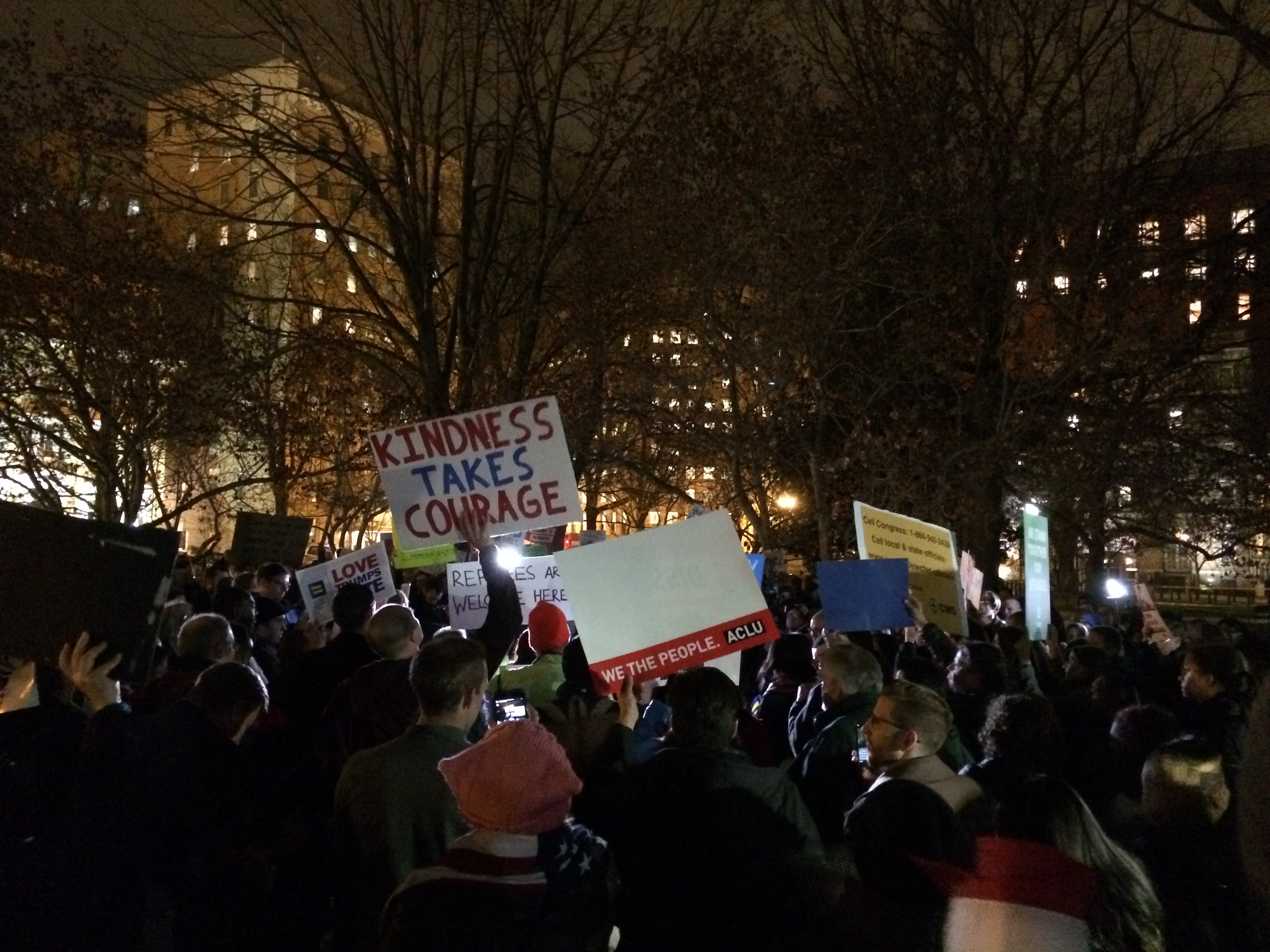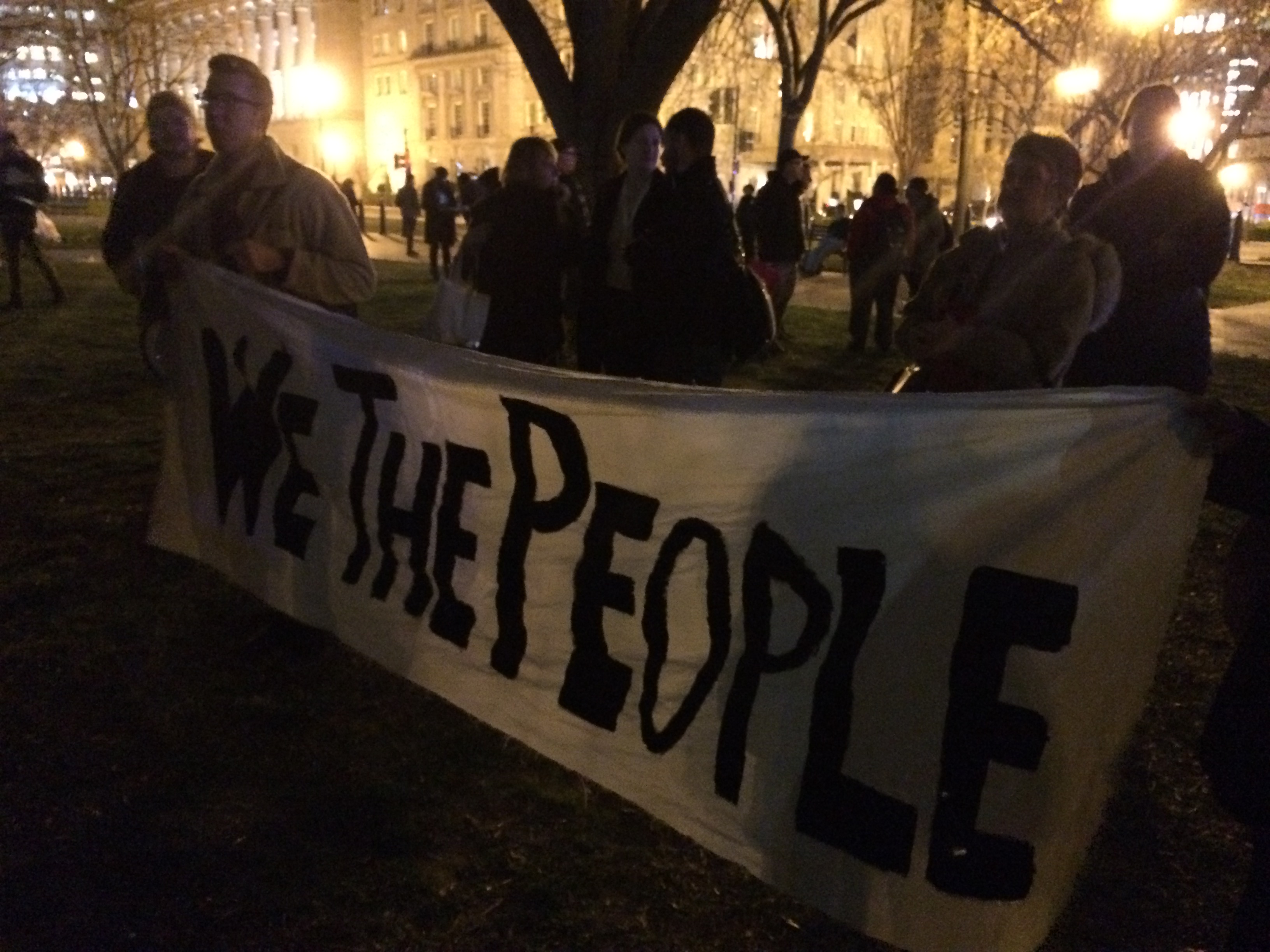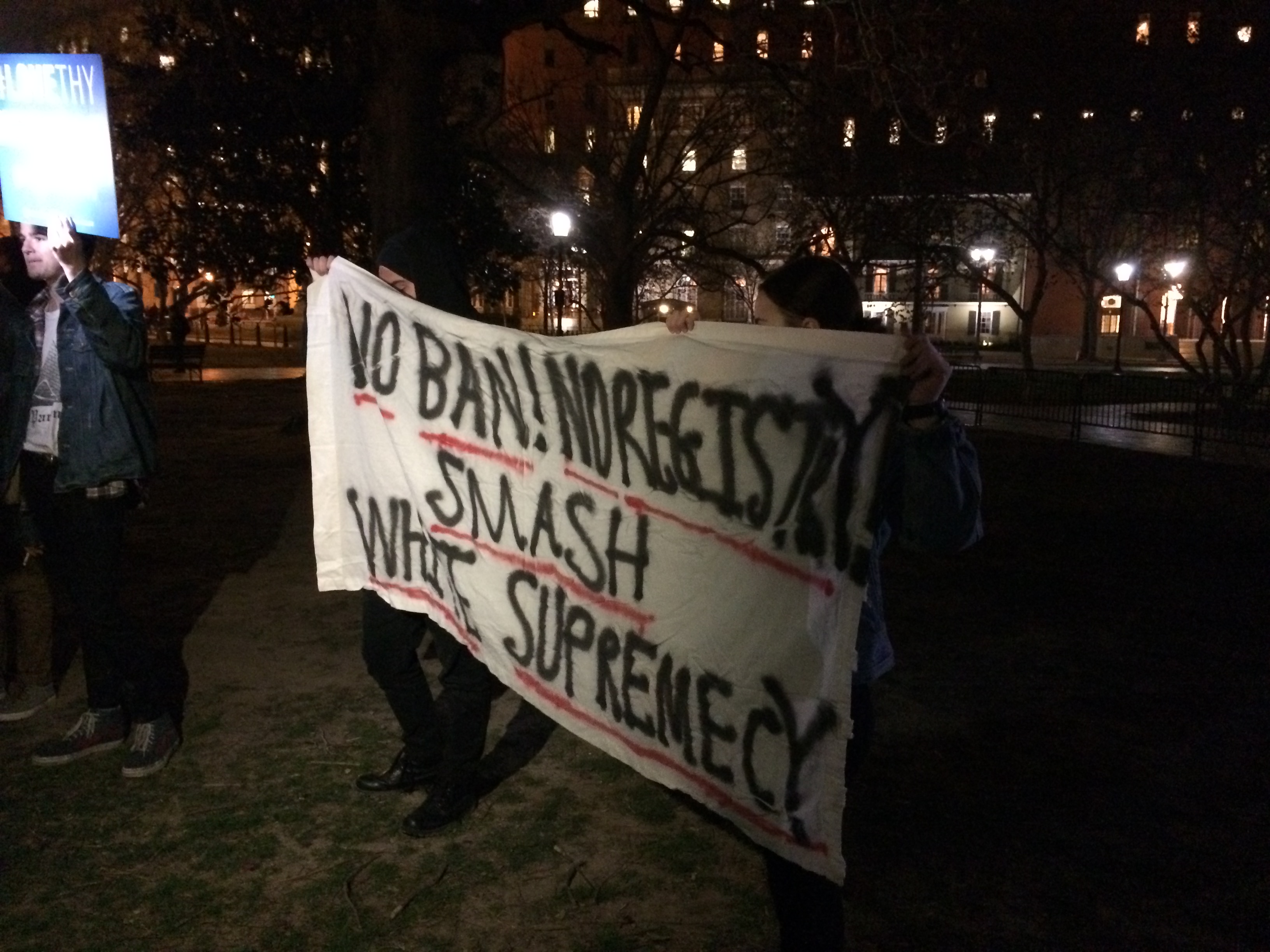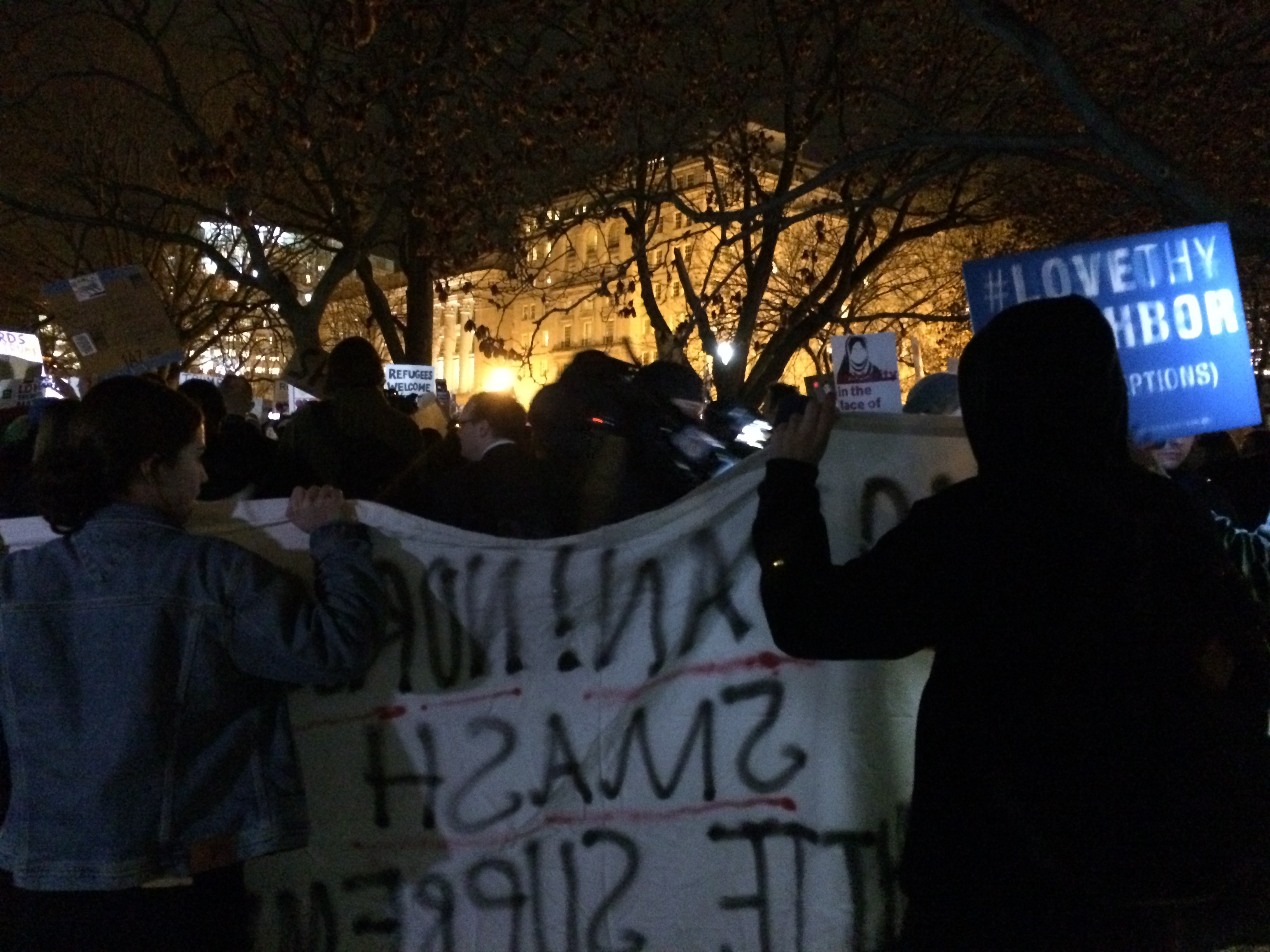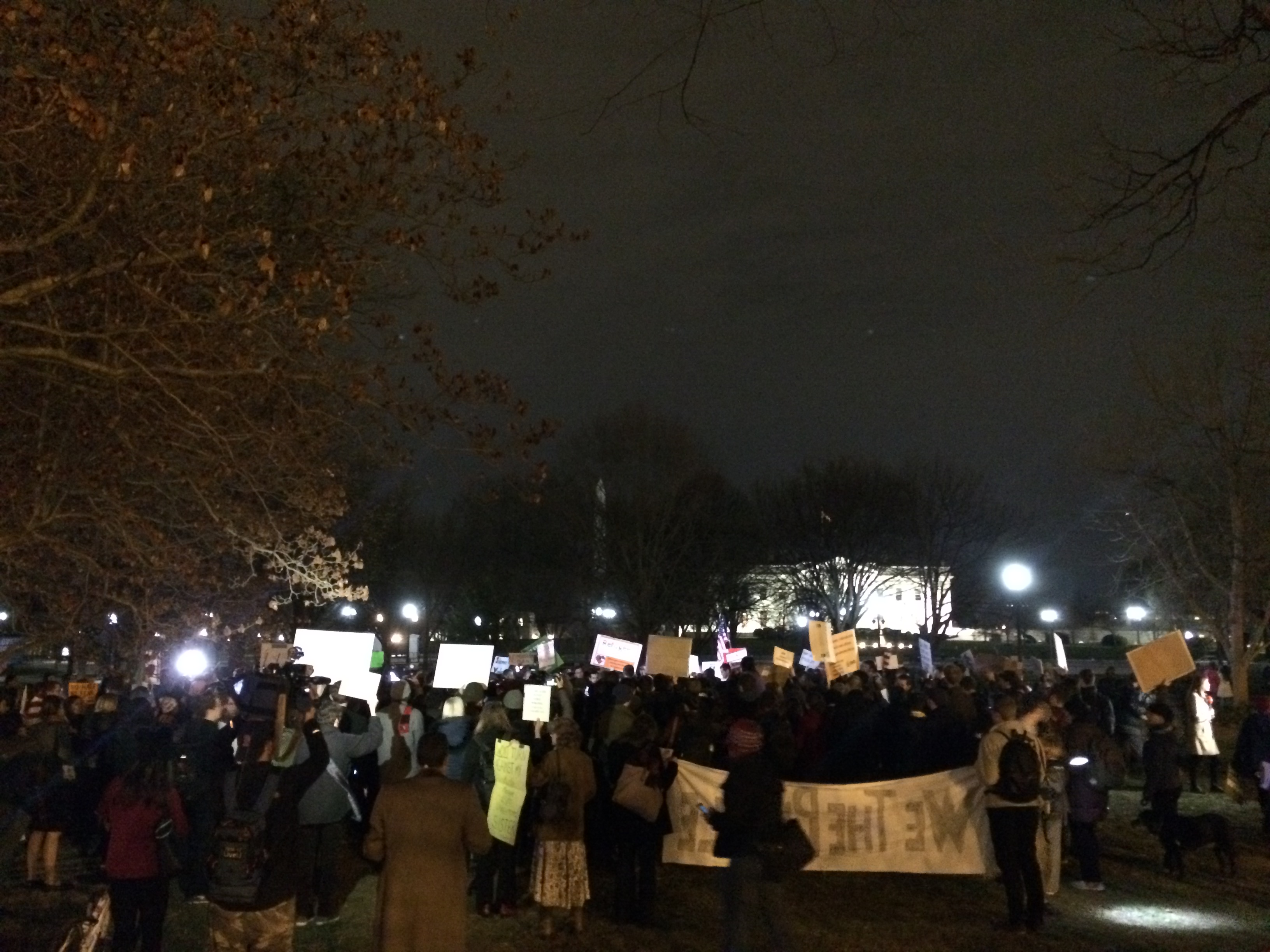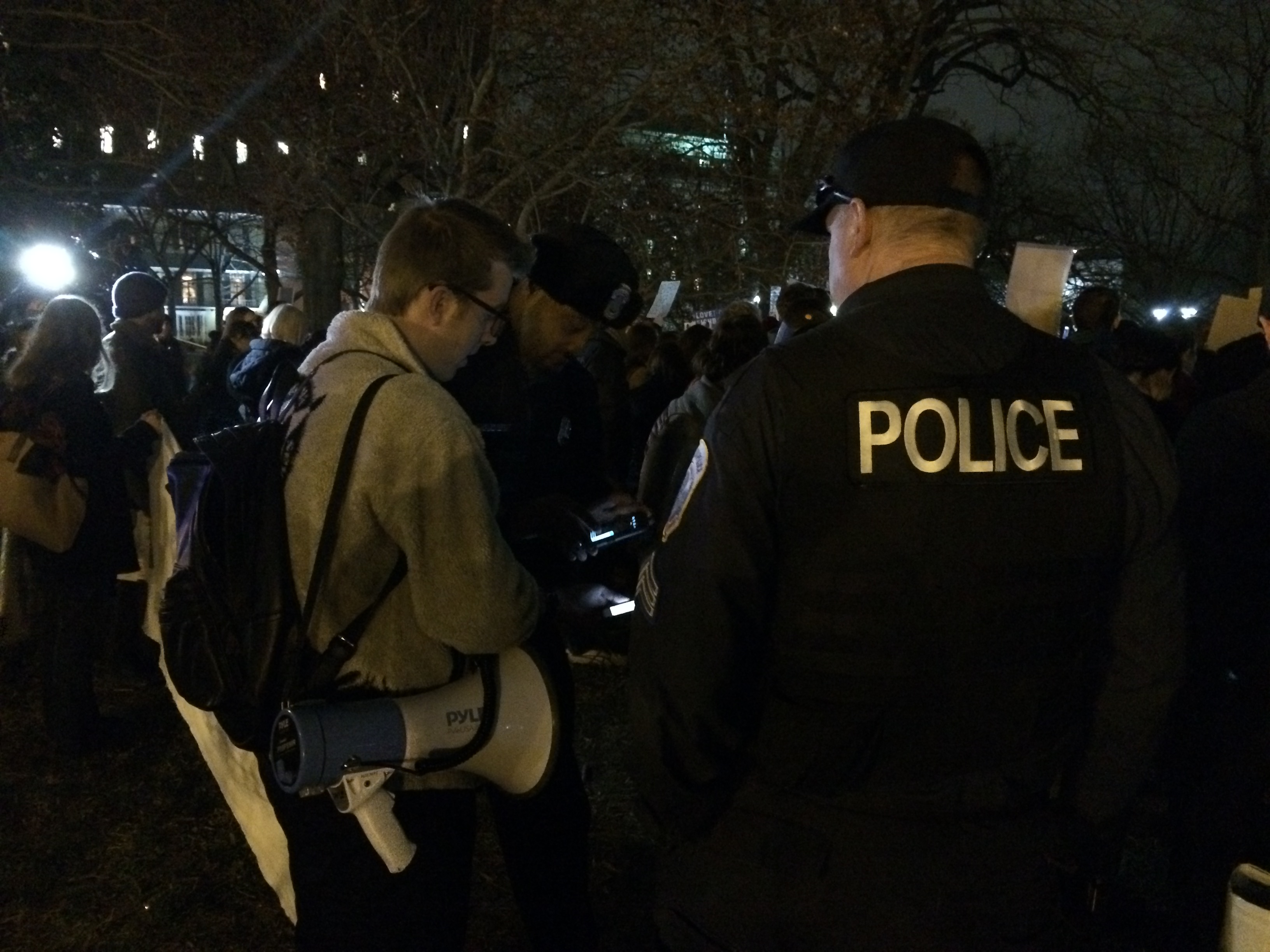Protesters descended on the White House to protest a revised executive order Monday which temporarily prohibits travel from several Muslim-majority countries.
President Donald Trump signed the revised executive order in response to a judicial block. The administration has argued the temporary ban will help safeguard against terrorism. Those opposed believe the executive order goes against American values by discriminating against Muslims.
“I’m out here today protesting the new executive order and to stand in solidarity with refugees and Muslims around the country,” protester Jonathan Stanley told InsideSources. “I think the new executive order and the past one are unconstitutional and divisive. So I’m here to stand up and say no, against that rhetoric and the executive order.”
The executive order puts temporary travel restrictions on Iran, Libya, Somalia, Sudan, Syria, and Yemen. It also calls for more aggressive vetting procedures. The administration wants to ensure people from those countries can be properly vetted before they lift the restrictions.
Iraq was previously included in the list of countries, but it was dropped from the new order at the urging of a number of senior officials.
“I think as a Jewish-American I have a particular perspective on what it’s like for the United States to welcome people or not to welcome people,” protester Daniel Essrow told InsideSources. “And I feel I have a responsibility to be that voice welcoming people to this country.”
Protesters converged on airports and cities Jan. 27 when the original executive order was signed. The crowds were notably larger the last time around. Groups have held numerous protests in the weeks since. The Ninth Circuit Court of Appeals eventually blocked the executive order in response to the legal challenges.
“I’m out here because I’m really offended and disappointed in Donald Trump’s renewed Muslim ban executive order,” protester Ben Brown told InsideSources. “I think it goes against American values, the Constitution, and the morals of this country, as well.”
Trump has argued the executive order isn’t about religious discrimination. He counters it’s really about safeguarding against regions known for terrorism. The revised executive order makes a few changes and clarifies some language. It will not, for instance, revoke existing visas approved before it goes into effect March 16.
“No, it hasn’t made anything better,” Brown said. “It’s new words, new lingo, but means the same thing. I think he already made it clear that he intends to ban Muslims from this country.”
The renewed executive order also does not apply to lawful permanent residents and green card holders. Essrow believes the improvements don’t matter because the end goal is still to ban Muslims. He adds the president has even said as much during his campaign.
“It was clearly less sloppily done and they worked hard to try to make it legal,” Essrow said. “This is as close as he thinks he can get legally but he still has intent. He made that obvious.”
The administration has expressed concern that terrorists might have infiltrated refugee and immigrant populations to get into the country. It notes that the six countries included in the executive order have previously been identified by the last administration as sources of terror.
Trump has faced a slew of protests since winning the presidency. Activists have gathered to oppose his rhetoric on women, his stance on environmental issues, his stance on immigration, and many other issues. His travel ban executive order has fueled a lot of the unrest.

![Trump’s Revised Travel Ban Met With Protests [PICTURES]](https://insidesources.com/wp-content/uploads/2017/03/IMG_7869-300x300.jpg)
